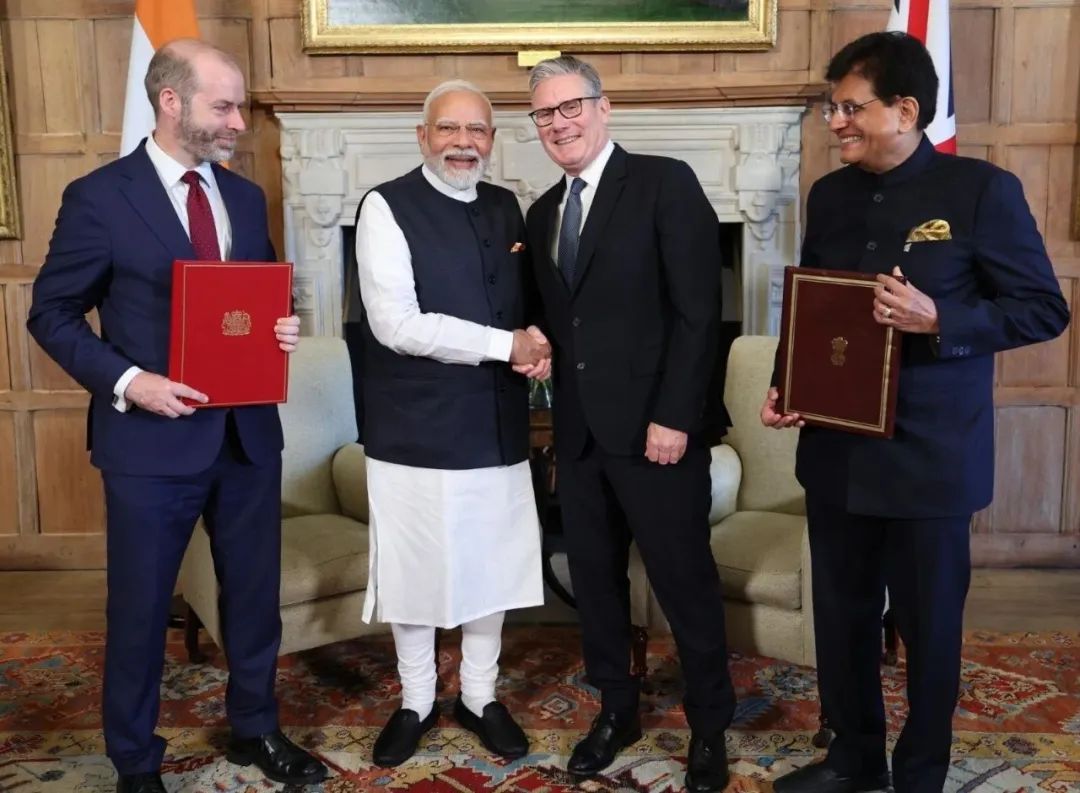99% of Goods Exported from India to the United Kingdom (UK) Will Achieve Zero Tariff
After India resumed issuing tourist visas to Chinese citizens for the first time in five years, India and the UK have done something significant: "Made in India" has burst into the European market, shocking the global trade community.
On July 24 local time, coinciding with Indian Prime Minister Modi's visit to the United Kingdom, India and the UK signed a free trade agreement. This is not only India's first major bilateral trade agreement with a developed economy in over a decade, but also one of the largest agreements for the UK since Brexit.

The UK government issued a statement saying that the agreement will reduce the average tariff rate imposed by India on UK goods from 15% to 3%. According to the agreement, 99% of goods exported from India to the UK will enjoy zero tariffs. For goods exported from the UK to India, tariffs will be reduced on 90% of them, and 85% of the goods will achieve zero tariffs within 10 years.
According to the objectives of the agreement, India and the UK hope to double their bilateral trade to $120 billion by 2030, and further increase it by £25.5 billion before 2040. The agreement has already been approved by the Indian Cabinet, and will next enter the approval process in the UK Parliament. It is expected that both countries will complete their respective domestic approval procedures within a year.

Earlier (in May 2025), when the UK and India concluded negotiations and announced the completion of a free trade agreement, British Prime Minister Starmer declared the agreement a "benchmark for Globalization 2.0," while Indian Prime Minister Modi regarded it as a "springboard for becoming the world's fourth-largest economy." The essence of this agreement has already gone beyond mere economic calculations.
【Copyright and Disclaimer】The above information is collected and organized by PlastMatch. The copyright belongs to the original author. This article is reprinted for the purpose of providing more information, and it does not imply that PlastMatch endorses the views expressed in the article or guarantees its accuracy. If there are any errors in the source attribution or if your legitimate rights have been infringed, please contact us, and we will promptly correct or remove the content. If other media, websites, or individuals use the aforementioned content, they must clearly indicate the original source and origin of the work and assume legal responsibility on their own.
Most Popular
-

List Released! Mexico Announces 50% Tariff On 1,371 China Product Categories
-

Nissan Cuts Production of New Leaf EV in Half Due to Battery Shortage
-

New Breakthrough in Domestic Adiponitrile! Observing the Rise of China's Nylon Industry Chain from Tianchen Qixiang's Production
-

Dow, Wanhua, Huntsman Intensively Raise Prices! Who Controls the Global MDI Prices?
-

Clariant Unveils Cost-Cutting Plan Details, Plans to Shut Down Multiple Plants






